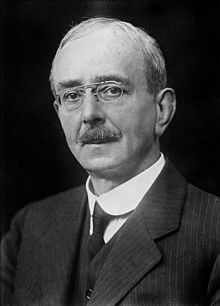Why was Charles Scott Sherrington Awarded the Nobel Prize for Physiology or Medicine in 1932?
Charles Scott Sherrington: Nobel Laureate for Discovering the Functions of Neurons (1932)
Charles Scott Sherrington, a British physiologist, made remarkable contributions to the field of neuroscience during the early 20th century. Renowned for his groundbreaking research on the functions of neurons and the intricacies of neural communication, Sherrington played a pivotal role in advancing our understanding of the nervous system. In recognition of his exceptional discoveries, he was awarded the Nobel Prize for Physiology or Medicine in 1932. This article explores the reasons behind Sherrington’s prestigious honor and highlights his significant scientific breakthroughs.

The Concept of the Synapse:
Charles Scott Sherrington’s Nobel Prize was primarily awarded for his work on elucidating the concept of the synapse, the junction between neurons. Sherrington’s investigations, conducted in the late 19th and early 20th centuries, provided crucial insights into the fundamental mechanisms of neural communication.
Through a series of experiments, Sherrington demonstrated that the transmission of signals between neurons occurs through synapses. He observed that nerve impulses do not flow continuously but rather undergo discrete transmissions, allowing for precise and controlled communication between neurons.
Reflexes and the Inhibitory-Excitatory Balance:
Sherrington’s research on reflexes was particularly influential. He explored the mechanisms by which sensory stimuli trigger coordinated motor responses. Sherrington proposed that reflexes are mediated by a complex interplay between inhibitory and excitatory signals at the level of the synapse.
His investigations revealed that certain synapses exert inhibitory effects, dampening neural activity, while others have excitatory properties, enhancing neuronal firing. Sherrington’s concept of the inhibitory-excitatory balance laid the foundation for understanding the regulation of neural circuits and the coordination of motor actions.
Coined the Term “Synapse”:
Sherrington’s significant contributions extended beyond his experimental findings. He introduced the term “synapse” in 1897 to describe the junction between neurons where neural signals are transmitted. This term became widely adopted and continues to be a cornerstone of neuroscience terminology.
Sherrington’s recognition of the synapse as a fundamental unit of neural communication provided a conceptual framework for further investigations into the complexities of neural networks and their functional roles.
Recognition and Legacy:
Charles Scott Sherrington’s Nobel Prize for Physiology or Medicine in 1932 celebrated his exceptional scientific achievements and the transformative impact of his research in neuroscience. His work revolutionized our understanding of the functions of neurons, synaptic transmission, and the dynamics of neural circuits.
Sherrington’s discoveries and concepts continue to shape the field of neuroscience and inspire further research into the intricacies of the nervous system. His work formed the basis for subsequent investigations into synaptic plasticity, neural connectivity, and the mechanisms underlying neurological disorders.
Charles Scott Sherrington’s Nobel Prize in 1932 honored his groundbreaking contributions to neuroscience and his pivotal role in unraveling the functions of neurons and the concept of the synapse. His investigations provided crucial insights into the mechanisms of neural communication, the balance between inhibitory and excitatory signals, and the coordination of motor actions.
Sherrington’s legacy continues to influence the field of neuroscience, guiding our understanding of the nervous system’s complexities and its role in physiological processes. His work serves as a testament to the power of scientific curiosity and rigorous experimentation in advancing our knowledge of the intricate workings of the human brain and the wonders of the nervous system.




